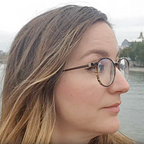How product designers collaborate at Aircall
In June 2020, Aircall’s product design team went through a massive change: we experienced a 500% growth. After raising 65M dollars in series C funding last year (pretty impressive, right?), our company grew from 200 to 400 people. Welcome to the hyper growth scale-up world.
Back to our team. We went from a one-man team to a 5 people gang in less than 60 days.
On top of the obvious challenge of simultaneously onboarding 4 new team members (for specialised and high context roles), we soon faced the extra challenge of full remote collaboration, when Covid crisis hit us again and sent us back home, working in our favorite pyjamas.
To become a functional team, we needed to address the following points:
- Get to know each other as people, but also as designers.
- Get onboarded and ramp up quickly on a complex product scope.
- Avoid working in silos, share context to ensure the overall coherence of our product experience.
- Feeling part of a team while being remote. Have fun together, stay engaged and motivated… despite zoom.
To tackle these challenges, we defined a set of collaboration rules and rituals. They help us connect, share information, and function better as a team. As for everything we designers do, it was a trial and error process. We tried formats that didn’t work, iterated on promising ones, had some unproductive workshops, and learned from them. Fast-forward 9 months later, we now found our mojo. Besides the occasional game session, we have a set of 6 design rituals that work pretty well for us:
Weekly kick-off
- When: Every Monday morning
- What: Our weekly rendez-vous to reconnect after the weekend and set the week on a good track
- Why: Connect on a personal level. Get company-wide updates. Share with the team what we are working on.
- What: 15min of chitchat, 30min of updates, where we look at our design backlog and share our screens to show in-progress work.
Design pairing
- When: When needed
- What: Two people synchronously solving a design problem together.
- Why : Improve the quality of your design, stay focused, distribute knowledge, learn from each other.
- How: 2 designers meet over zoom and open the same Figma file to tackle one design problem they agreed on (designing a workflow, refining a component spec, etc.) One drives. She moves the pixels around. The other is the co-pilot. Their role is to help navigate by providing feedback and asking questions.
Design studios
- When: When needed
- What: A workshop that uses collective intelligence to solve a problem together
- Why: Come up with better ideas by having different expertises around the table. Give your partners and stakeholders a voice. Make them feel involved and energised.
- How: Invite friends (PMs, engineers, support people…) Use a virtual whiteboard tool. Prepare a clear prompt and scenario. Have several rounds of ideations. Create groups or ask people to generate ideas individually. Share and provide feedback. Rinse and repeat. You can do several rounds in one session.
Design critiques
- When: Weekly
- What: A meeting to ask for feedback on design work
- Why: Elevate quality by using peer feedback. Break silos, provide visibility on our track of work and avoid non consistent/redundant work
- How: Designers book a slot. Each presenter explains the context and shares their piece of work. Other designers ask questions and provide feedback.
Sharing is Caring
- When: Monthly
- What: Brand design + Product design monthly meetups
- Why: provide visibility on our current work and priorities, identify opportunities to collaborate
- How: Show and tell format. Sometimes we also do little creative challenges.
Retros
- When: Monthly, on Friday afternoon.
- What: A meeting to reflect on how things are going, good and bad.
- Why: A space to vent, celebrate, but also to find ideas on how we can improve, or what should be fixed.
- How: With our favorite remote whiteboard tool, we prepare different sections to fill by each participant. For instance: happy stuff, sad stuff, questions. Everyone adds their insights on post-its. The facilitator helps the group discuss each topic. We identify action items to work on our issues.
These meetings, workshops and practices have helped us greatly in delivering better design, learning from each other and feeling part of a team. They will continue to evolve over time as we grow and uncover new challenges.
Do you want to know more? Are you interested in joining us? Let’s chat! We are looking for talented and ambitious people to join the adventure!
Get in touch 🙂
